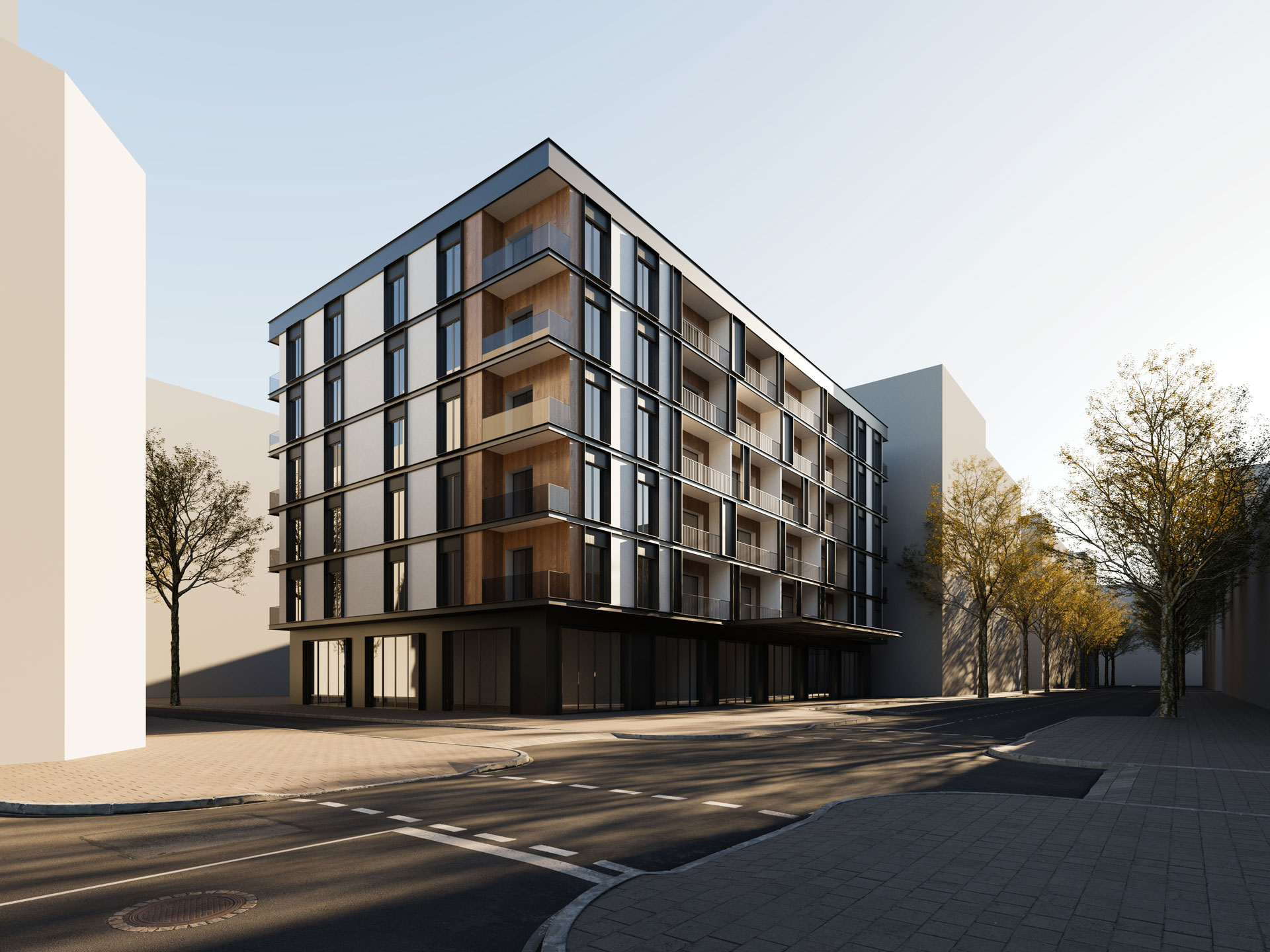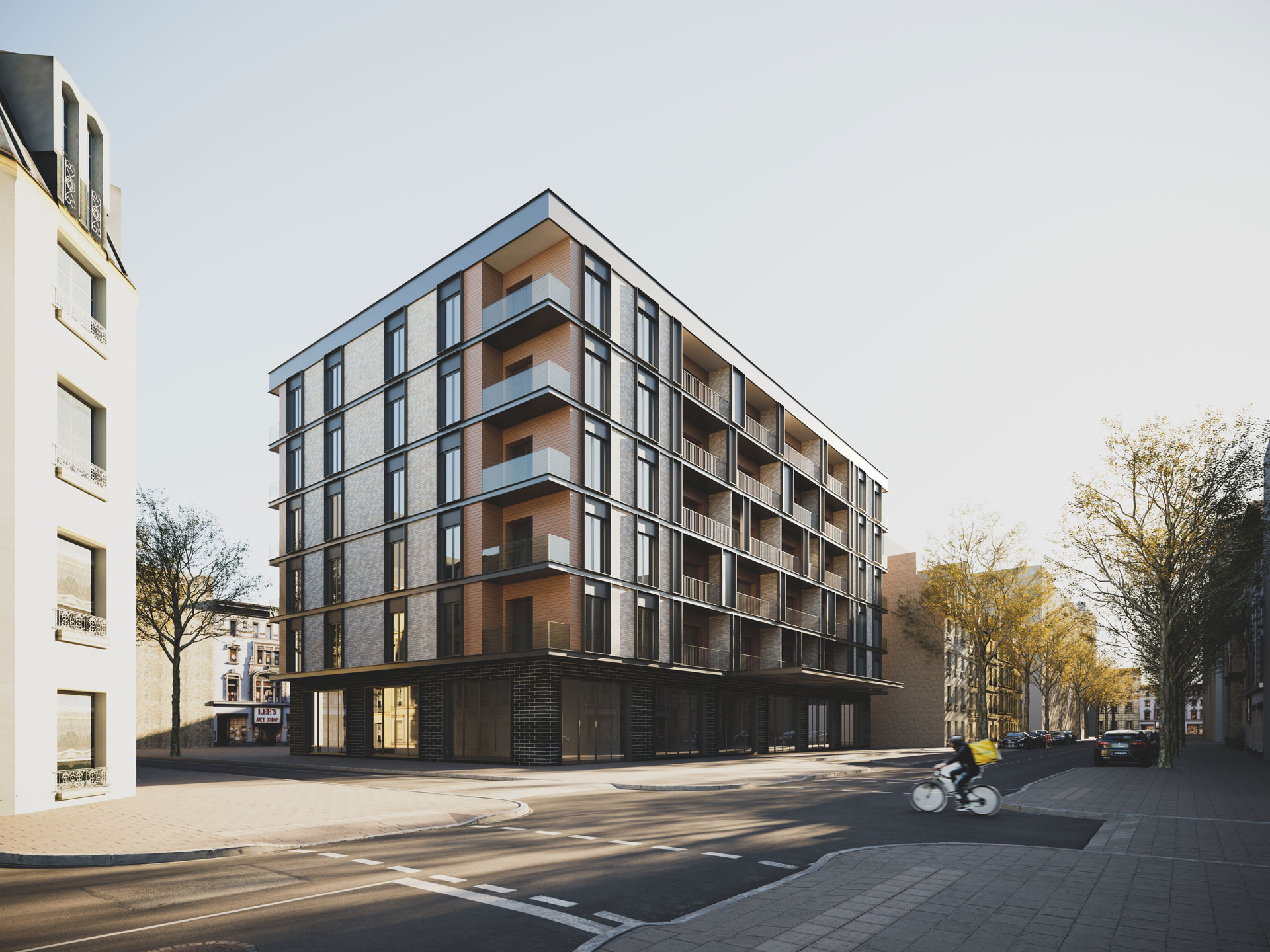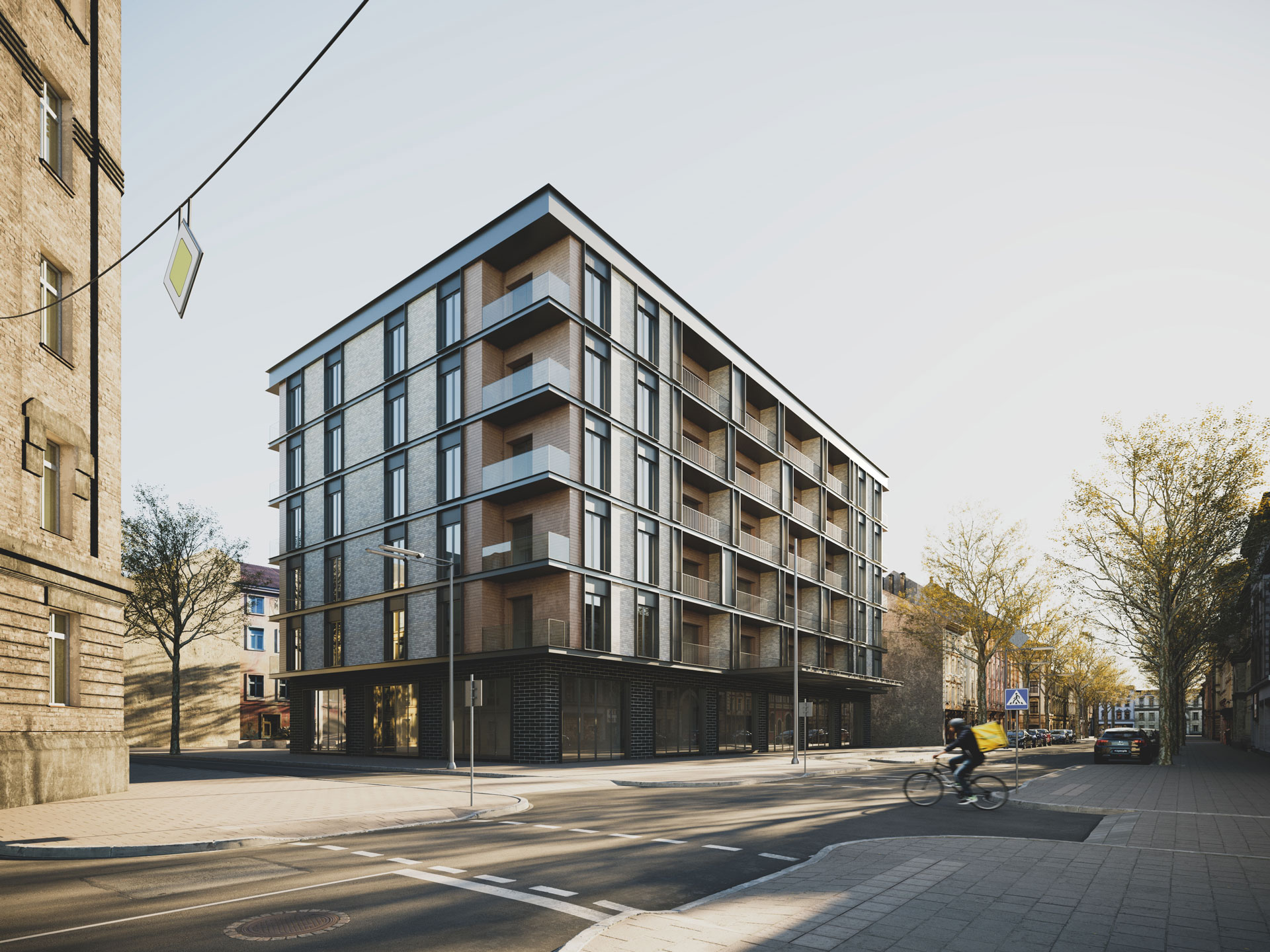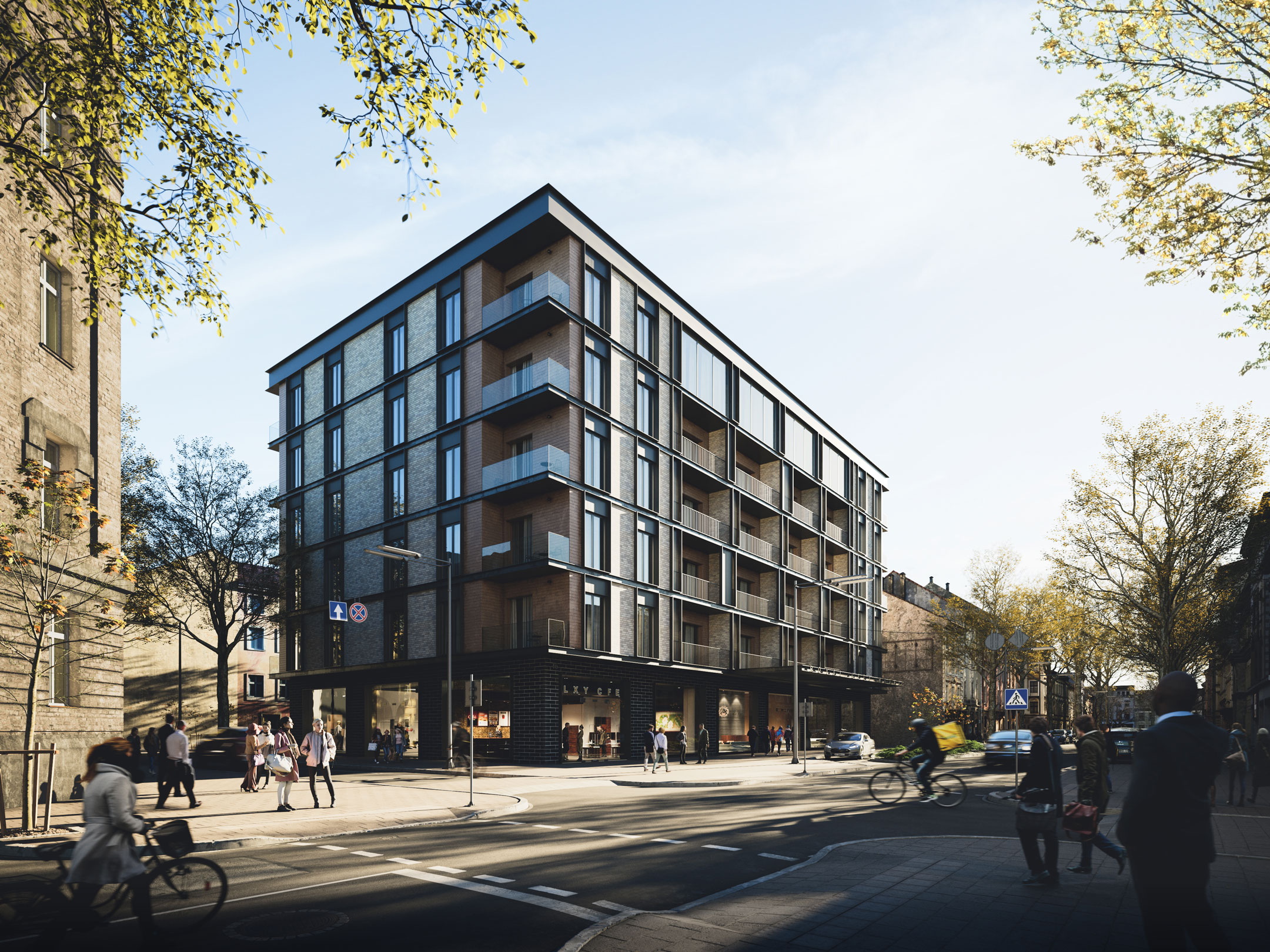Hyperrealistic 3D Rendering for a Hotel Concept: Making-Of
Check out this hyperrealistic 3D rendering above. Doesn’t it look just like a photo? In fact. Had you not known this, would you have guessed the pic is computer-generated? Thought so. And despite the striking realism, it’s full CGI.
This 3D exterior rendering was created by our Senior 3D Artist and Mentor, Igor Tsogla, for an internal competition. His goal was to showcase an example of a high-end CGI project for commercial object construction in historic districts.
Which is a subtle matter. The architect needs to create a design that would fit in seamlessly with the surroundings and comply with existing regulations. And how does one prove that the building will not only do that but also add to the elegance and diversity of the place? By showing it with a hyperrealistic 3D rendering.
So Igor decided to illustrate the impact of 3D graphics in such a project and visualize a modern hotel. The render was not created for commercial purposes, and therefore, there was no actual assignment. The environment was based on the urban landscapes the 3D artist saw in Berlin, and the concept — on the design he once worked with.
Now the 3D visualizer had all the elements he needed to start work. Let’s follow him and see how he created this hyperrealistic 3D rendering, step-by-step!
Creation of 3D Rendering
The creation of high-end imagery doesn’t come down to software skills — although they are crucial. The process involves a lot of preparatory conceptual work outside 3ds Max and Corona Renderer, and there are a lot of decisions to make at every step. What could these be? Let’s find out.
Step 1: Building a Scene
Igor started by thinking out the composition. He decided to place the building at a crossroad, for it’d make for a great view and help showcase the architecture. He then proceeded to work on the street look.
The street in this hyperrealistic 3D rendering is a masterpiece not only in terms of CGI, but also of comfort. It’s picturesque, quiet, and perfectly adapted to family living. We’ll talk about this later in more detail.
Ensure your exterior design project leaves a lasting impression and takes your clients’ breath away with stunning visuals.
Step 2: Volumetric Solution
Next, the 3D visualizer went on to create the 3D model of the hotel. Which means that basically, he made a box and adjusted it to the dimensions required. The height of the hotel almost matches that of the surrounding buildings, so as not to overshadow them.
Moreover, at this stage, the 3D artist built the facade. He wanted it simple, stylish, with the first floor dedicated to shops and cafés. Above, you can see the selection of images that inspired the CGI specialist to design the exterior.
Step 3: Stylistic Solution
The 3D visualizer wanted the building in the architectural rendering to look authentic and be in accord with its era, so he chose modern style. He refused to imitate the style of the constructions around. It would feel fake and diminish the aesthetic value of the design.
Step 4: CG Modeling
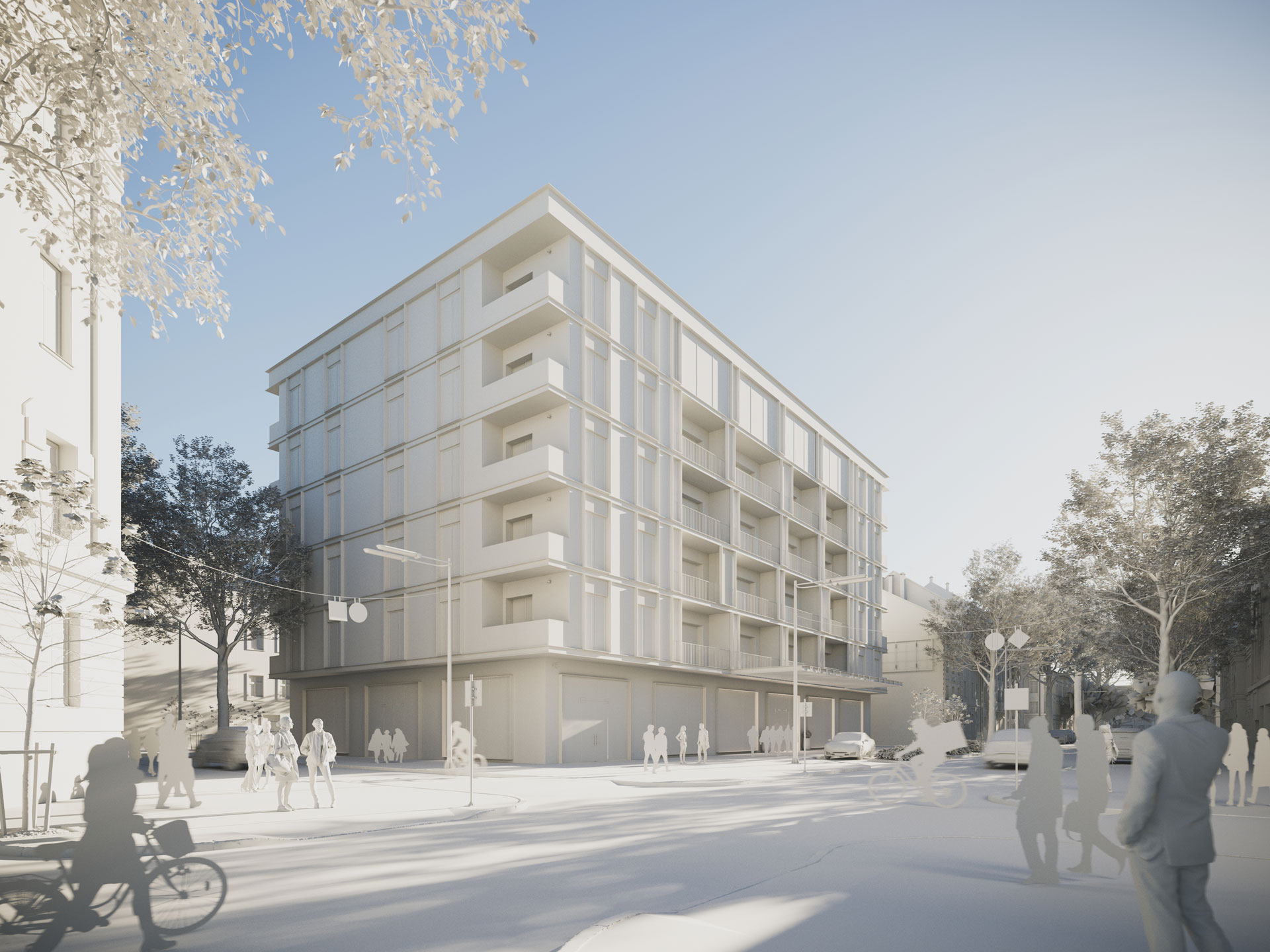
At this stage, Igor added detail to the grayscale 3D model of the hotel. He worked on facade, the rhythm of windows, glazing, and other details. When the 3D model was ready, the 3D artist chose the best angle for the future hyperrealistic 3D rendering.
Step 5: Texturing and Adding Details
The location in the 3D render is made-up, but looks super realistic. For the CGI specialist designed it in accordance with all the modern urban requirements. There’s everything necessary for a comfortable living and passtime, including the parking space, shops, even a coffee house. That means people won’t need to use cars for every chore or every time they want to go out. Everything is right there, and the historic character of the area will make for pleasant walks.
Moreover, to create a hyperrealistic 3D rendering, the 3D visualizer added to the scene a dropped curb for disabled people, tactile paving, a pedestrian safety island, a lay-bay, as well as road markings, tiles, street lamps, and trees. He also filled the scene with details that add life and movement, such as cars and bicycles, and “populated” it.
Another important task at this stage was to make the road look hyperrealistic too. And the CG artist nailed it! He took a high-poly 3D model, photoscanned surface textures, pavement, and applied ambient occlusion to achieve the dirt effect.
Get your project estimated in just 1 hour - fill out this brief!
Igor made it based on his experience and architectural background, with no guidance or detailed technical assignment. Can you imagine how pleasant it is to work with someone who understands the architecture like that? Such a specialist will ask less questions, and fill the gaps when needed. The work will therefore be easier, faster, and the resulting 3D rendering will exceed the boldest expectations. That’s what makes a Senior 3D Artist with architectural background the only choice for a complex large-scale project.
Step 6: Lighting
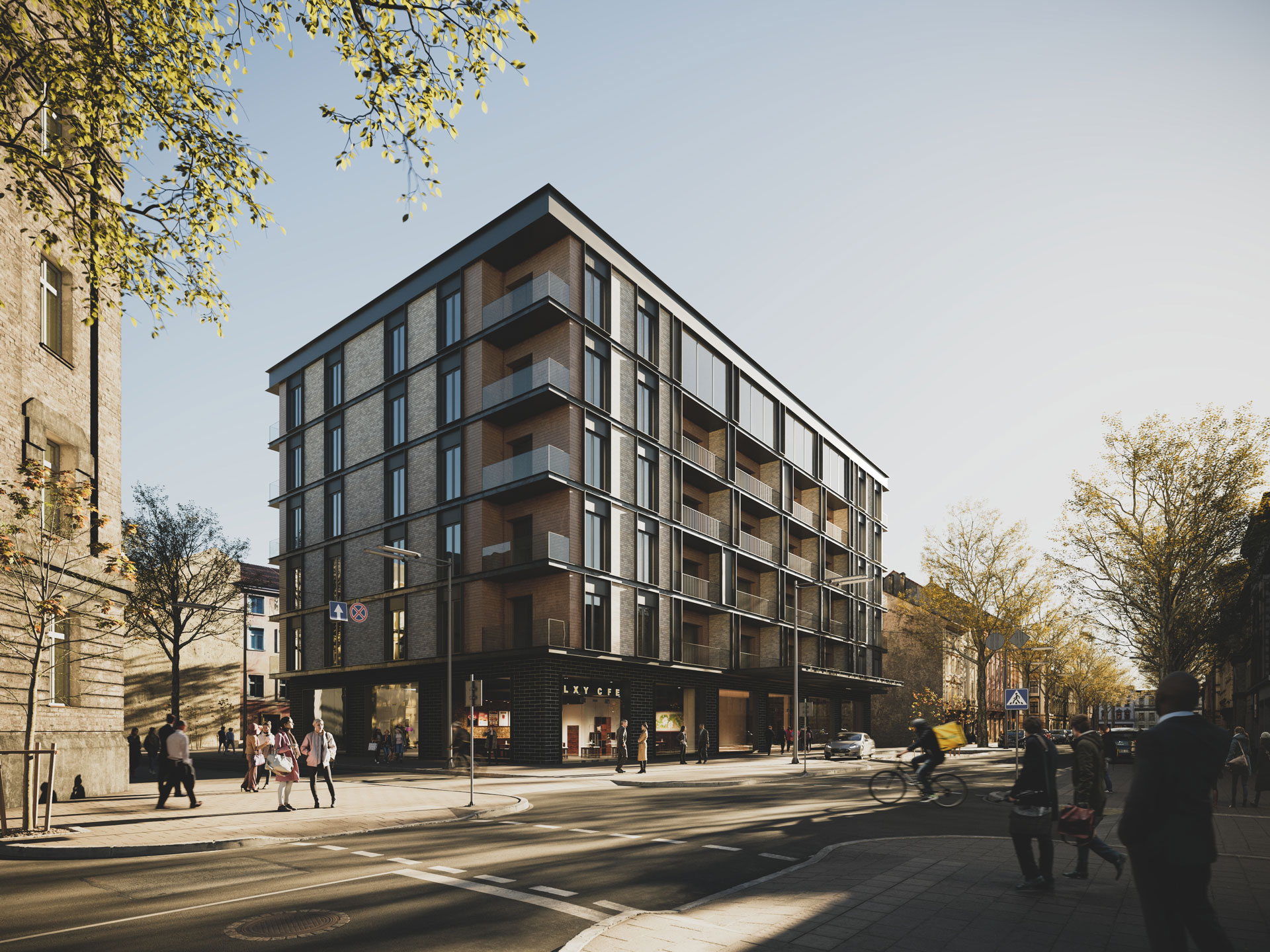
Next, the CGI specialist set the light in the hyperrealistic 3D rendering scene. He adjusted it till he found the scenario that does not hide or distort the design but helps to showcase it. This is gained by playing with shadows and the light temperature.
To achieve the effect, Igor chose where the sun would shine from and the season of the year. He opted for autumn, which allows for fewer leaves and therefore helps show the scene better. As well, the 3D visualizer positioned the sun so it would give these beautiful long shadows you see in the commercial exterior rendering. Once the light was set, it was time to press the “Render” button and wait for results.
Step 7: Post-production
The hyperrealistic 3D rendering was virtually ready at this stage. All that was left was to enhance the storytelling and visual impact. So the 3D visualizer fine-tuned tone mapping, contrast, exposition, white balance. In addition, he highlighted the difference between plans, the color plan, sky, and clouds. And the masterpiece was ready!
To showcase an architectural design, one must not only have an artistic vision and strong software skills. A 3D artist needs to love and understand the architecture, and strive to make the world a more beautiful and comfortable place. Just like the architect who created the design or concept.
And this is exactly what makes this project so visually powerful. The 3D artist deeply cared about the place he showed, and made sure that the 3D rendering makes a viewer want to live there. So he worked on every detail, and this methodical approach and accuracy made the picture hyperrealistic.
Need your marketing visuals to look like a million bucks? Then contact us for 3D rendering services. We will provide you with mind-blowing imagery and 3D animations that will look like art pieces and capture your viewers’ hearts.
Want to learn how much your project costs? See how we evaluate 3D rendering projects

Irma Prus
Content Writer, Copywriter
Irma writes articles and marketing copy for ArchiCGI. Her dream is that more people discover the power of CGI for architecture. Irma is into neuromarketing, ruby chocolate and Doctor Who series.



